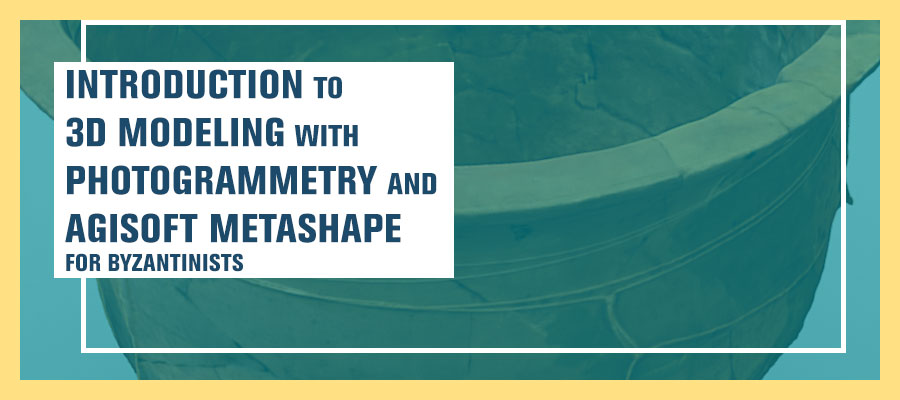Introduction to 3D Modeling with Photogrammetry and Agisoft Metashape for Byzantinists
Photogrammetry is the science of creating a measurable 3D point cloud from high-resolution 2D images. It is a commonly used to document archaeological and cultural heritage in order to preserve, analyze, and make artefacts digitally accessible. This online workshop will introduce the theory of photogrammetry and Agisoft Metashape, a useful software for processing 3D models.
Between the two sessions, all participants will choose an object, photograph it, and create a 3D model.
Course Outline
- Friday, January 27, 12:00–1:30 pm (EST): Introducing photogrammetry and using Agisoft Metashape. The first session will introduce the technology of photogrammetry and demonstrate how to use Agisoft Metashape to process a 3D model. Particular attention will be given to choosing an appropriate object to record in 3D.
- Friday February 3, 12:00–1:30 pm (EST): Photogrammetry in archaeology and cultural heritage and Agisoft Metashape troubleshooting. The second session will continue the discussion of photogrammetry, specifically its uses and challenges in archaeological and cultural heritage contexts. Participants will share their 3D models and have the opportunity to discuss problems encountered in creating their models. Participants will learn methods for disseminating their work.
Workshop Checklist
- Computer capable of running Agisoft Metashape. Basic requirements include up to 32 GB RAM (Laptop or Desktop); 4 - 12 core Intel, AMD or Apple M1/M2 processor, 2.0+ GHz; and NVIDIA or AMD GPU with 1024+ unified shaders. More detailed requirements are available HERE.
- Agisoft Metashape pre-installed. Agisoft Metashape requires a paid license. For the purposes of this workshop, you should first check with your university library or Digital Humanities lab to see if there is an institutional license that you can use. If your university does not have a license, you should download and install the free 30-day trial version of Agisoft Metashape, Professional Edition.
- Digital camera. For the purposes of this workshop, your cell phone camera will suffice.
- Stable internet connection.
- 2–4 hours between the meetings for the creation of your 3D model. The actual time required to create your model will depend on the object you choose to model and your computer specifications.
The workshop is limited to 15 participants. Registration is first come, first served.
REGISTRATION FOR THIS WORKSHOP IS CLOSED.
The time commitment for this workshop is three hours of instruction and an additional two–four hours between the meetings for the creation of the 3D model. Participants are required to attend both sessions.
Who is eligible?
- Graduate students and early career researchers (PhD received after January 2015) in the field of Byzantine studies. Students enrolled in graduate programs in North America and early career researchers working in North America will be given priority. Graduate students and early career researchers outside of North America will be placed on a waiting list and contacted if space is available.
- All participants must be BSANA members. BSANA membership is free for graduate students and early-career contingent scholars who have earned their PhD within the last eight years and who do not hold a permanent or tenure-track appointment. If you are not already a BSANA member, please complete the BSANA Membership Form before registering for the workshop. Your membership status will be confirmed before your space in the workshop is confirmed.
This workshop is part of the partnership between the Mary Jaharis Center for Byzantine Art and Culture and the Byzantine Studies Association of North America to provide digital humanities training opportunities to graduate students and early career researchers.
